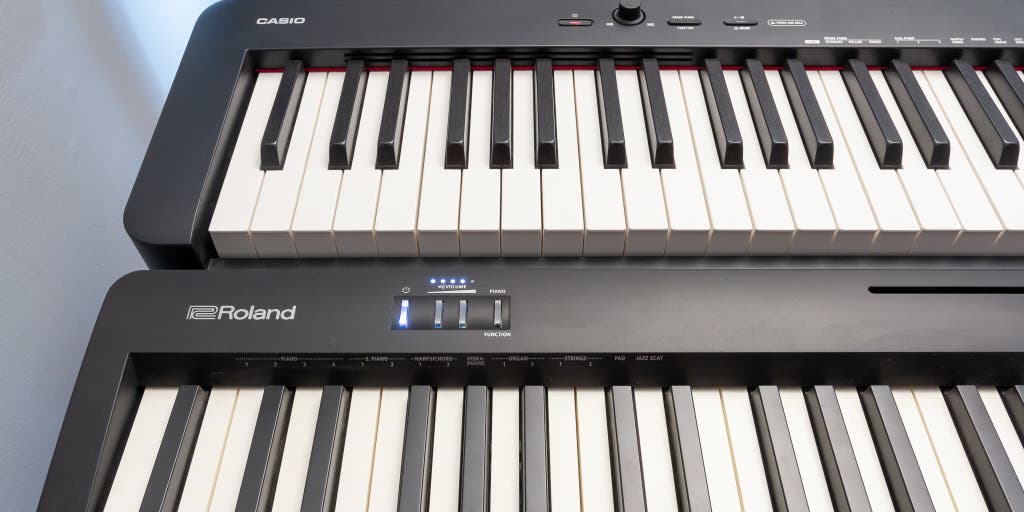1. Introduction
The Alesis Coda Pro 88 Key Digital Piano with Stand is a professional-grade digital piano that promises to deliver a realistic acoustic piano experience. With its weighted, hammer-action keys and built-in sound engine, the Alesis Coda Pro 88 Key Digital Piano with Stand is a great choice for serious musicians who want to take their playing to the next level. In this article, we will take an in-depth look at the features and benefits of the Alesis Coda Pro 88 Key Digital Piano with Stand, as well as how to set it up and use it properly.
2. Overview of the Alesis Coda Pro 88 Key Digital Piano with Stand
The Alesis Coda Pro 88 Key Digital Piano with Stand is designed for serious musicians who want to replicate an acoustic piano experience on a digital instrument. The weighted hammer-action keys provide a realistic feel similar to an acoustic piano, while the built-in sound engine provides realistic sounds from different instruments. The stand also provides stability when playing, so you can be sure that your instrument won’t move around while you’re playing.
3. Features and Benefits of the Alesis Coda Pro 88 Key Digital Piano with Stand
The Alesis Coda Pro 88 Key Digital Piano with Stand has many features that make it ideal for serious musicians. The weighted hammer-action keys provide a realistic feel similar to an acoustic piano, while the built-in sound engine provides realistic sounds from different instruments. Additionally, the stand ensures stability when playing so you don’t have to worry about your instrument moving around while you’re playing. Other features include USB/MIDI connectivity for connecting to computers or other MIDI devices; onboard effects such as reverb and chorus; and 128 polyphony voices for layering multiple sounds together.
4. Pros and Cons of the Alesis Coda Pro 88 Key Digital Piano with Stand
One of the biggest advantages of the Alesis Coda Pro 88 Key Digital Piano with Stand is its realistic feel and sound quality compared to traditional acoustic pianos. Additionally, its USB/MIDI connectivity allows you to connect it to computers or other MIDI devices for recording or performance purposes. However, one potential downside is its price tag; at $799 USD it’s not exactly an inexpensive option for most people looking for a digital piano solution.
5. How to Set Up the Alesis Coda Pro 88 Key Digital Piano with Stand
Setting up your Alesis Coda Pro 88 Key Digital Piano with Stand is relatively straightforward and should only take a few minutes once everything is unpacked from its box. First, assemble the stand according to instructions provided in your user manual; then attach your keyboard securely onto the stand using provided screws or bolts (depending on what type of stand you have). Once secured, plug in all necessary cables such as power supply and USB/MIDI connections into their respective ports on both your keyboard and computer (if applicable). Finally turn on your keyboard by pressing “Power” button located at top right corner near volume control knob; then follow instructions provided in user manual if needed for further setup before beginning play or recording sessions!
6 Tips for Using the Alesis Coda Pro 88 Key Digital Piano With Stand
Using your new digital piano can be daunting at first—but don’t worry! Here are some tips that will help you get started:
1) Make sure you are seated comfortably—you should be able to reach all of your keys without straining yourself too much!
2) Start slowly—it’s important not rush into playing complex pieces right away—take time getting used to how each key feels under your fingers first before moving onto more complicated pieces!
3) Listen carefully—you need to be able understand what notes you are playing so that you can make corrections if needed!
4) Practice regularly—it’s important not forget that practice makes perfect! You need dedicate time each day practicing scales and other exercises in order really get better at playing!
5) Record yourself—listening back recordings can help identify any mistakes made during practice sessions which can then be corrected accordingly!
6) Have fun—remember why you started learning how play in first place: because it’s enjoyable! Don’t let yourself get too bogged down by technicalities or worrying about perfectionism – just enjoy making music!
7 Maintenance Of The Alesis Coda Pro 88 Key Digital With Stand
It’s important that you maintain your digital piano properly in order keep it functioning optimally over time – here are some tips:
1) Clean regularly – use a soft cloth dampened slightly warm water wipe down surface area after each use ensure no dust build up occurs which could damage internal components over time!
2) Check cables – inspect all cables connected device (power supply & USB/MIDI connections etc.) periodically ensure they remain securely fastened without any fraying occurring due wear tear usage!
3) Avoid extreme temperatures – make sure store instrument away from direct sunlight heat sources avoid exposing device sudden temperature changes which could cause damage internal components like speakers amplifiers etc…
4) Update software – check manufacturer website regular basis see if there any updates available download install them onto device ensure optimal performance always maintained even after years usage!
8 Conclusion
The Alesis Coda Pro 88 key digital piano with stand is an excellent choice for serious musicians who want a realistic acoustic piano experience without sacrificing portability or affordability. With its weighted hammer action keys, built-in sound engine, USB/MIDI connectivity options, onboard effects such as reverb and chorus, 128 polyphony voices for layering multiple sounds together, and stable stand design – this digital instrument offers professional grade performance without breaking the bank.
Properly setting up and maintaining this instrument will ensure optimal performance over time – making sure every note played sounds perfect every time.

